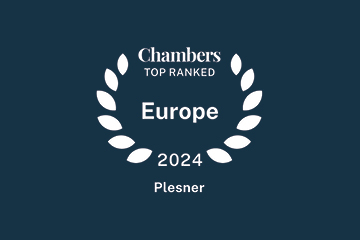The right to change preselected entities in open tendering
24 May 2016
By a judgment of 24 May 2016 in the MT Højgaard/Züblin case (Case C-369/14), the Court of Justice of the European Union has pronounced on the possibilities of changing the identity or the composition of a preselected entity during an award procedure. The case was a result of E. Pihl & Søn A/S' bankruptcy in August 2013 which raised the question of whether Banedanmark (a Danish company responsible for the railroad network in Denmark) and a number of other public employers could legally let Pihl's former consortium partners continue without Pihl.
In January 2013, Banedanmark commenced a negotiated procedure for the construction of a new railway line between Copenhagen and Ringsted. In March 2013, Banedanmark preselected five companies, including a joint venture consisting of E. Pihl & Søn A/S ("Pihl") and Per Aarsleff A/S ("Aarsleff").
On 26 August 2013, the Danish Maritime and Commercial High Court issued a bankruptcy order against Pihl and the joint venture submitted its first bid (as the partnership JV Pihl - Aarsleff - TP 4 Urban Tunnels I/S) the day after. In October 2013, Banedanmark approved that Aarsleff could continue alone and in its own name and then decided in December 2013 to award the contract to Aarsleff.
In a ruling in part on suspensive effect of 28 January 2014 the Danish Public Procurement Complaints Board found it likely that in a final ruling MT Højgaard A/S and Züblin A/S would be successful in their claim that Banedanmark's award of the contract to Per Aarsleff A/S was illegal as Per Aarsleff A/S had not been preselected alone for the contract put up for tender. However, on 18 August 2014 the Complaints Board decided to refer the issue to the Court of Justice of the European Union for a preliminary ruling.
The Court of Justice of the European Union emphasised initially that generally there should be legal and substantive identity between the preselected entity and the entity submitting the tender. However, the requirement of identity may be qualified, meaning that changes may be allowed, in order to ensure, in a negotiated procedure, adequate competition for the contract put up for tender.
The legality of any changes of a preselected entity is, however, firstly conditional on the surviving entity independently fulfilling the preselection requirements. Based on the reference ruling the Court of Justice of the European Union took into account that Aarsleff could have been preselected alone. Secondly, it is a condition that the continued participation in the award procedure does not prejudice the other participants' competitive position.
The partnership agreement between Pihl and Aarsleff was entered into on the same day as Pihl's bankruptcy and the partnership's first bid of 27 August 2013 was submitted without a signature by the trustee of Pihl's estate in bankruptcy. The Court of Justice of the European Union has asked the Complaints Board to decide whether the circumstances surrounding the submission of the first bid were so irregular that Aarsleff should not have been allowed to continue its participation in the award procedure.
The Court of Justice of the European Union has also asked the Complaints Board to decide whether the fact that Aarsleff subsequently taking over 50 employees from Pihl means that Aarsleff gained a competitive advantage compared to the other tenderers.
Based on the grounds of the judgment, it seems most likely that the Complaints Board will find, when making a final ruling in the case, that Banedanmark's decision to let Aarsleff continue alone affected the positions of the other tenderers adversely and as a consequence Banedanmark violated the principle of equality of treatment.
The legality of any changes of a preselected entity is, however, firstly conditional on the surviving entity independently fulfilling the preselection requirements. Based on the reference ruling the Court of Justice of the European Union took into account that Aarsleff could have been preselected alone. Secondly, it is a condition that the continued participation in the award procedure does not prejudice the other participants' competitive position.
The partnership agreement between Pihl and Aarsleff was entered into on the same day as Pihl's bankruptcy and the partnership's first bid of 27 August 2013 was submitted without a signature by the trustee of Pihl's estate in bankruptcy. The Court of Justice of the European Union has asked the Complaints Board to decide whether the circumstances surrounding the submission of the first bid were so irregular that Aarsleff should not have been allowed to continue its participation in the award procedure.
The Court of Justice of the European Union has also asked the Complaints Board to decide whether the fact that Aarsleff subsequently taking over 50 employees from Pihl means that Aarsleff gained a competitive advantage compared to the other tenderers.
Based on the grounds of the judgment, it seems most likely that the Complaints Board will find, when making a final ruling in the case, that Banedanmark's decision to let Aarsleff continue alone affected the positions of the other tenderers adversely and as a consequence Banedanmark violated the principle of equality of treatment.
Click here to read the judgment






